Nestled along the banks of the Thu Bon River in Quang Nam Province, Thanh Ha Pottery Village stands as a living testament to Vietnam’s centuries-old ceramic traditions. Just 3 kilometers west of Hoi An Ancient Town, this remarkable artisan community has been shaping clay into cultural treasures for over 500 years. What makes this destination truly special isn’t just its proximity to the UNESCO World Heritage site of Hoi An, but its authentic preservation of traditional pottery-making techniques that have been passed down through 16 generations of skilled craftsmen.
The Rich History of Thanh Ha Pottery Village
The story of Thanh Ha Pottery Village begins in the late 15th century when skilled artisans from Thanh Hoa Province migrated south, bringing with them the ancient art of pottery making. These pioneering craftsmen settled along the Thu Bon River, recognizing the area’s abundant clay deposits and strategic location for trade. The village quickly flourished, becoming the primary supplier of ceramics for the bustling port town of Hoi An during its golden age as a major Southeast Asian trading hub.
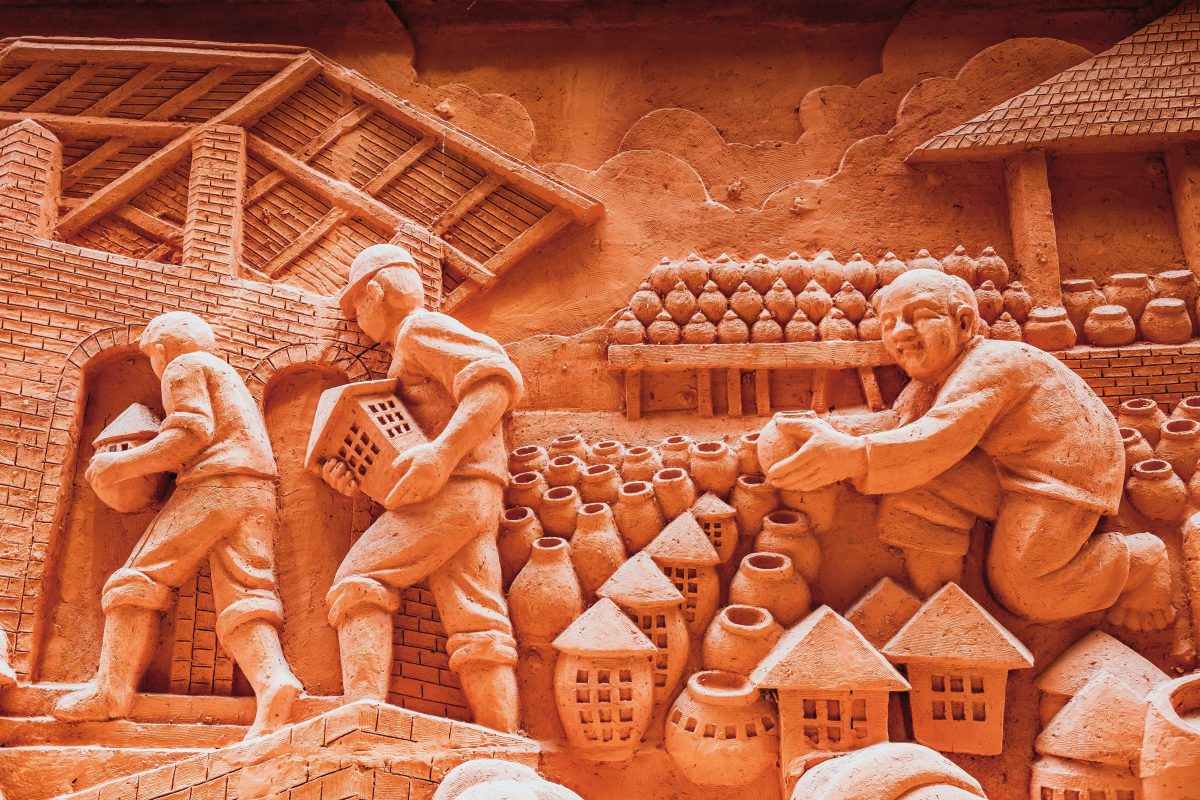
During the 16th and 17th centuries, when Hoi An served as a crucial stop on international maritime trade routes, Thanh Ha pottery gained recognition far beyond Vietnam’s borders. Japanese and Chinese merchants, Portuguese traders, and Dutch sailors all sought after these distinctive ceramics. The village’s products weren’t merely functional items; they were artistic expressions that reflected the cultural synthesis occurring in this vibrant trading port.
“The clay of Thanh Ha holds the memories of centuries, and in every piece we create, we honor our ancestors who first discovered this sacred craft.” – Master Potter Nguyen Van Duc, 7th generation artisan
Traditional Pottery Making Techniques
What sets Thanh Ha Pottery Village apart from modern ceramic production centers is its unwavering commitment to traditional methods. The pottery-making process here remains largely unchanged from centuries past, offering visitors an authentic glimpse into Vietnam’s artisanal heritage.
The Clay Preparation Process
The journey of creating Thanh Ha ceramics begins with the careful selection of clay from the Thu Bon River banks. This isn’t just any clay – it’s a specific mixture that local artisans have perfected over generations. The clay is first dried under the sun, then ground into fine powder and mixed with water to achieve the perfect consistency. This process alone can take several days, requiring patience and expertise to ensure the material is suitable for shaping.
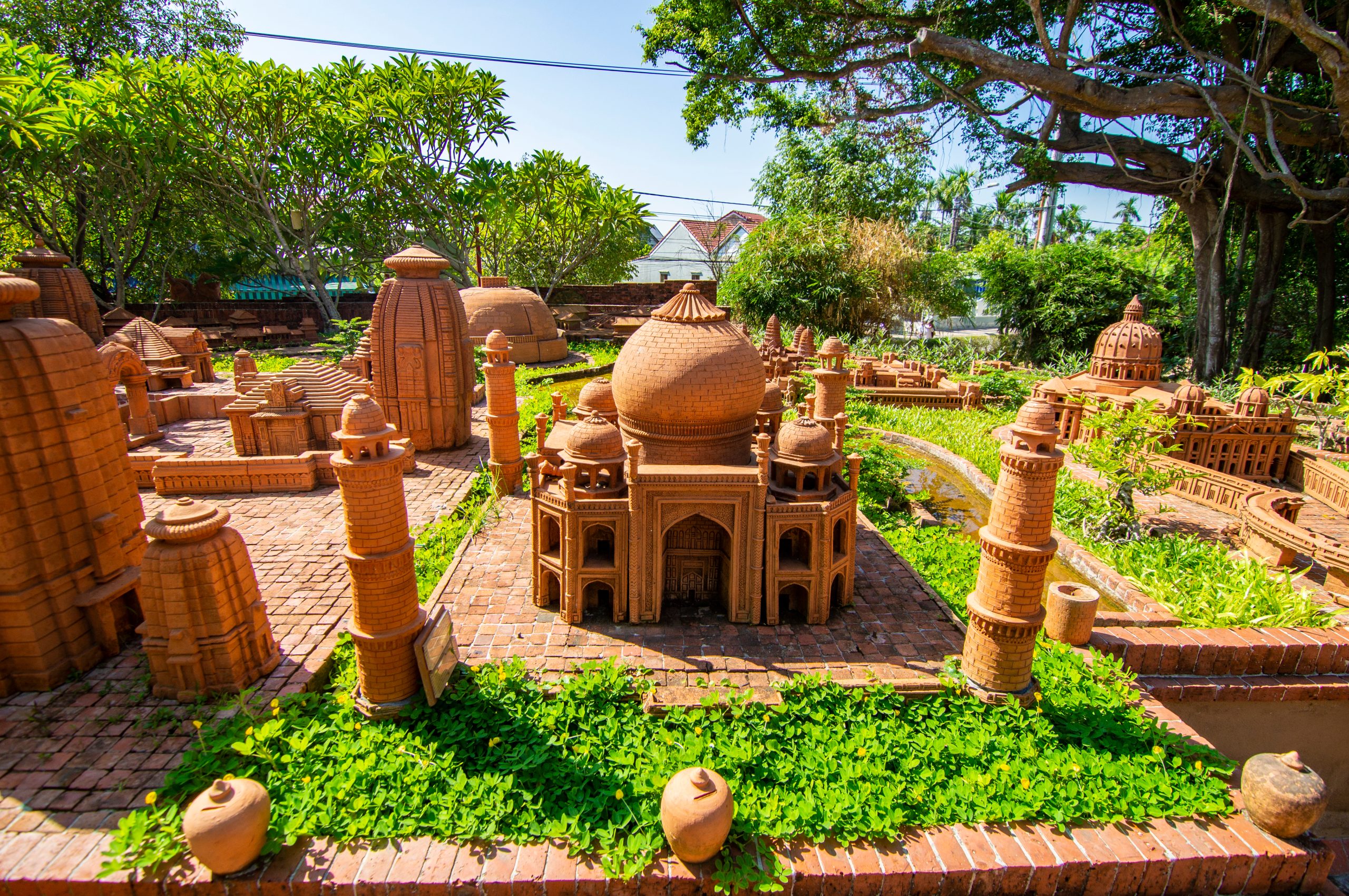
Shaping and Molding Techniques
Unlike many modern pottery centers that rely heavily on electric wheels, Thanh Ha artisans still use traditional foot-powered pottery wheels. This method requires incredible skill and coordination, as the potter must maintain consistent wheel speed while shaping the clay with their hands. The rhythmic motion of the wheel, powered by the potter’s foot, creates a meditative atmosphere that connects the artisan directly with their craft.
- Hand-building techniques: For larger pieces and decorative items, artisans use coiling and slab construction methods
- Wheel throwing: Perfect for creating symmetrical bowls, vases, and jars
- Molding: Used for creating uniform tiles and decorative elements
- Sculpting: For intricate figurines and artistic pieces
The Firing Process
Perhaps the most crucial stage in creating Thanh Ha pottery is the firing process. The village maintains several traditional kilns, including ancient climbing kilns that have been in use for centuries. These wood-fired kilns reach temperatures of up to 1,200 degrees Celsius, transforming raw clay into durable ceramics. The firing process can take up to 24 hours, during which artisans must constantly monitor and adjust the temperature to ensure perfect results.
Types of Products and Their Cultural Significance
The diversity of products emerging from Thanh Ha Pottery Village reflects both practical needs and artistic expression. Each piece carries cultural significance, often incorporating symbols and designs that tell stories of Vietnamese heritage.
| Product Type | Traditional Use | Cultural Significance |
|---|---|---|
| Yin-Yang Tiles | Roofing material | Symbol of harmony and balance in architecture |
| Water Jars | Storage vessels | Essential for daily life in tropical climate |
| Incense Burners | Religious ceremonies | Connection between earthly and spiritual realms |
| Tea Sets | Social gatherings | Represents hospitality and community |
| Decorative Figurines | Home decoration | Depicts folklore and mythological characters |
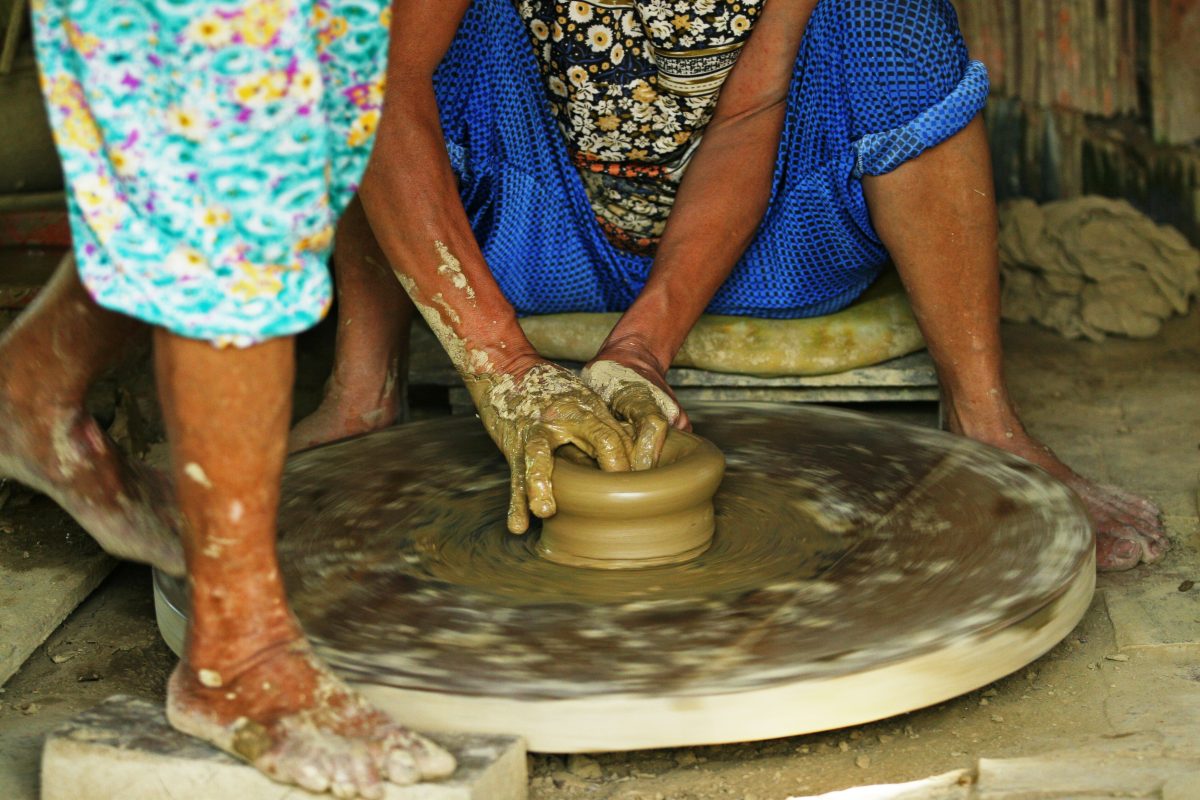
Visiting Thanh Ha Pottery Village: A Complete Guide
For travelers seeking an authentic cultural experience in Central Vietnam, Thanh Ha Pottery Village offers an immersive journey into traditional craftsmanship. The village has evolved to welcome tourists while maintaining its working artisan character, creating a perfect balance between preservation and accessibility.
Getting There
Located just 3 kilometers from Hoi An Ancient Town, reaching Thanh Ha Pottery Village is remarkably convenient. Visitors have several transportation options:
- Bicycle: The most popular and scenic option, taking about 15-20 minutes from Hoi An’s center
- Motorbike: Offers flexibility for exploring surrounding areas
- Taxi or Grab: Convenient for those preferring comfort
- Walking tour: Combined with visits to nearby vegetable villages and countryside
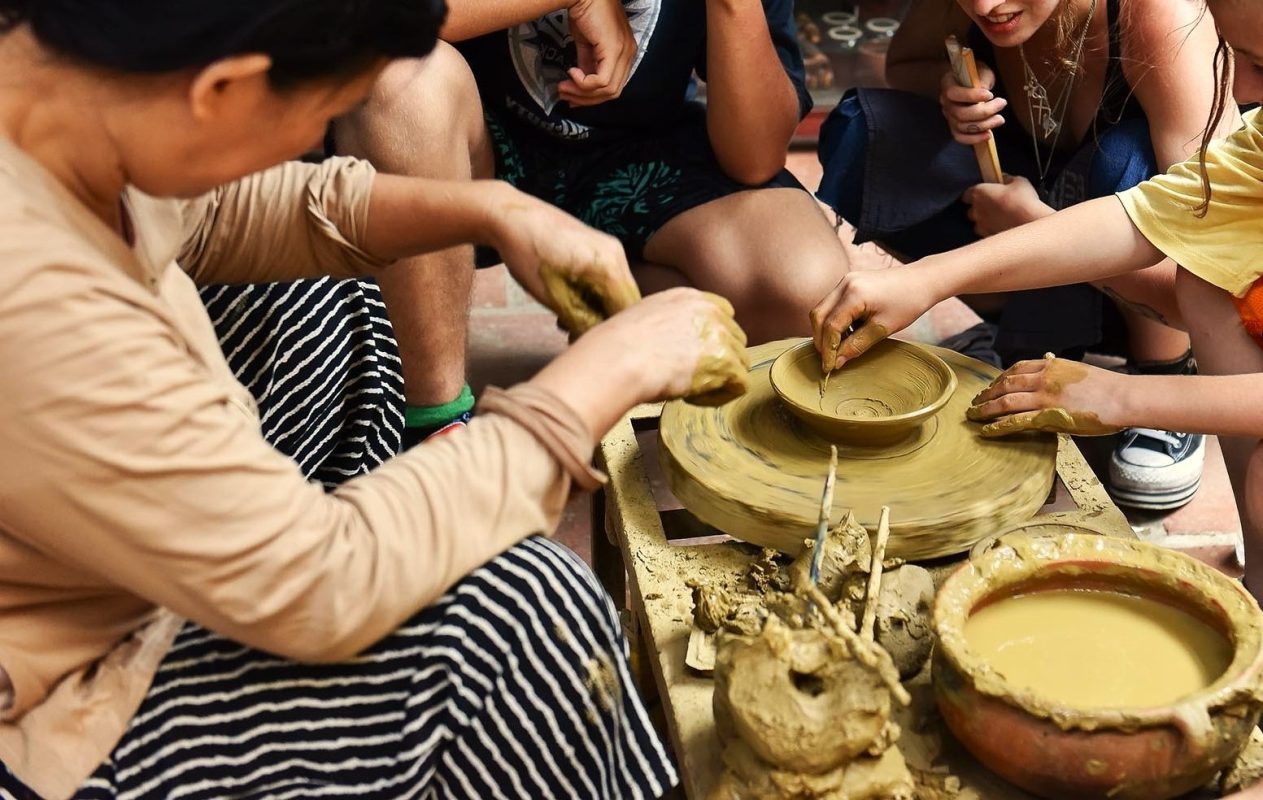
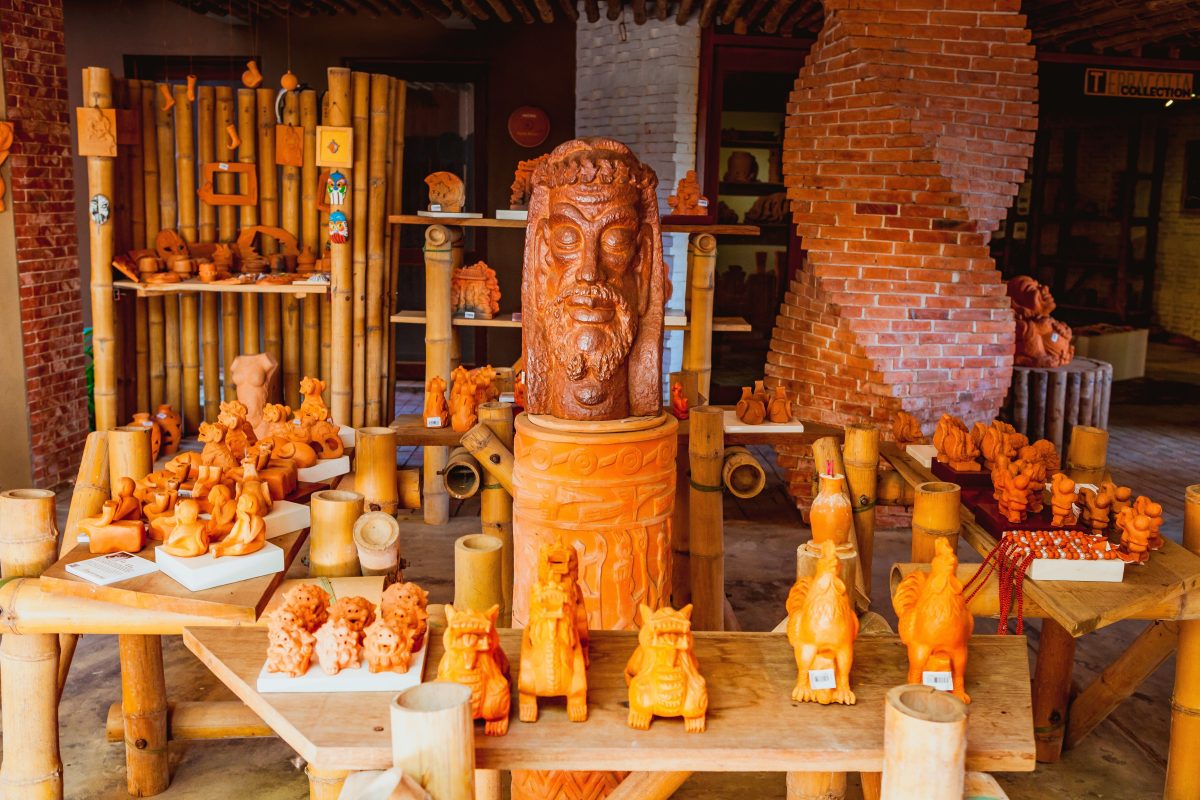
What to Expect During Your Visit
Upon entering Thanh Ha Pottery Village, visitors are greeted by the Thanh Ha Terracotta Park, a modern addition that showcases the village’s ceramic heritage through interactive exhibits and miniature replicas of world-famous architectural landmarks crafted entirely from terracotta. This provides an excellent introduction to the craft before exploring the working village.
Hands-On Pottery Making Experience
One of the most memorable aspects of visiting Thanh Ha Pottery Village is the opportunity to try your hand at pottery making. Several workshops offer guided sessions where visitors can create their own ceramic pieces under the guidance of master artisans.
Workshop Options
The pottery-making experience typically includes:
- Basic wheel throwing: Learn to center clay and create simple bowls or cups (30-45 minutes)
- Hand-building workshop: Create decorative items using traditional techniques (45-60 minutes)
- Painting and glazing: Decorate pre-made pottery with traditional motifs (30 minutes)
- Complete experience: Combines all techniques for a comprehensive understanding (2-3 hours)
“Teaching visitors our craft isn’t just about tourism – it’s about keeping our traditions alive. When someone creates their first pot, they understand the patience and skill required in our work.” – Ms. Pham Thi Hoa, pottery instructor
Taking Home Your Creation
Pieces created during workshops need to be fired, which takes 1-2 days. Most workshops offer shipping services to send completed pieces to your home country, or you can arrange to pick them up if staying in Hoi An for several days. This anticipation adds to the experience, as you’ll receive a unique souvenir that you personally crafted.
Supporting Local Artisans: Shopping and Souvenirs
Beyond the hands-on experience, Thanh Ha Pottery Village offers excellent shopping opportunities for those seeking authentic Vietnamese ceramics. The village features numerous family-run shops where you can purchase directly from the artisans who created the pieces.
What to Buy
When shopping in Thanh Ha, consider these popular and practical items:
- Miniature pottery sets: Perfect for gifts and easy to transport
- Decorative tiles: Featuring traditional Vietnamese patterns
- Tea sets: Functional art for daily use
- Zodiac animal figurines: Representing Vietnamese astrology
- Custom pieces: Many artisans accept orders for personalized items
Combining Your Visit with Nearby Attractions
The location of Thanh Ha Pottery Village makes it an ideal starting point for exploring the wider Hoi An area. Consider combining your pottery village visit with these nearby attractions:
- Tra Que Vegetable Village: Experience organic farming and enjoy a cooking class
- Kim Bong Carpentry Village: Discover traditional woodworking crafts
- Thu Bon River Cruise: Sunset boat trips departing from nearby docks
- Hoi An Ancient Town: Explore the UNESCO World Heritage site
Conservation Efforts and Future Challenges
While Thanh Ha Pottery Village has successfully maintained its traditions, it faces modern challenges. Younger generations are increasingly drawn to urban opportunities, threatening the continuity of ceramic knowledge. The village has responded by establishing training programs and partnering with schools to introduce pottery to children.
Environmental concerns also play a role in the village’s evolution. Traditional wood-fired kilns, while producing superior results, contribute to local air pollution. Some workshops are experimenting with more efficient firing methods that maintain quality while reducing environmental impact. These adaptations demonstrate how Thanh Ha balances tradition with necessary modernization.
Planning Your Perfect Visit
To make the most of your experience at Thanh Ha Pottery Village, consider these insider tips:
Essential Information
- Opening hours: 8:00 AM – 5:30 PM daily
- Entrance fee: 35,000 VND for Terracotta Park (includes village access)
- Workshop fees: 50,000-150,000 VND depending on chosen activity
- Duration: Allow 2-3 hours for a comprehensive visit
What to Bring
- Comfortable clothing: Pottery making can be messy
- Sun protection: Much of the village is outdoors
- Camera: Photography is generally permitted
- Cash: Most vendors prefer cash payments
- Reusable water bottle: Stay hydrated in the tropical climate
Conclusion: A Living Heritage Worth Preserving
Thanh Ha Pottery Village represents more than just a tourist attraction – it’s a living museum where centuries-old traditions continue to thrive. Each piece of pottery created here carries the weight of history, the skill of generations, and the soul of Vietnamese craftsmanship. Whether you’re an art enthusiast, culture seeker, or simply someone who appreciates handmade beauty, this remarkable village offers an unforgettable glimpse into Vietnam’s artistic heritage.
As you hold a piece of Thanh Ha pottery in your hands, you’re not just touching clay shaped by skilled artisans – you’re connecting with a tradition that has survived wars, floods, and the relentless march of modernization. By visiting and supporting this village, travelers play a crucial role in ensuring that these ancient techniques continue to be passed down to future generations, keeping the kilns of Thanh Ha burning bright for centuries to come.
For more information about exploring Central Vietnam’s cultural treasures, visit Samtour Vietnam or consult Lonely Planet’s Hoi An guide for comprehensive travel planning resources.




